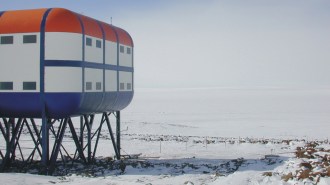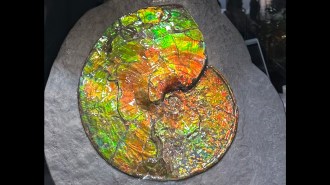
Artificial Intelligence
A quantum trick helps trim bloated AI models
Machine learning techniques that make use of tensor networks could manipulate data more efficiently and help open the black box of AI models.
Every print subscription comes with full digital access

Machine learning techniques that make use of tensor networks could manipulate data more efficiently and help open the black box of AI models.
We summarize the week's scientific breakthroughs every Thursday.

Simple chemistry could give the reindeer his famously bright snout. But physics would make it look different colors from the ground.

President Trump has argued the U.S. should test nuclear weapons because other countries are doing it. But scientific data suggest they’re not.

Ammolite gems’ fabulous colors arise from delicate assemblies of crystal plates.

Streams of liquid form drops thanks to unidentified disturbances. It could be the jiggling of individual molecules.
Math and physics explain the anguish of a golf ball that zings around the rim of the hole instead of falling in.

Theoretical physicist Alex Lupsasca is pushing for a space telescope to glimpse the thin ring of light that is thought to surround every black hole.
With a high-speed camera and a tiny guillotine, scientists showed that chopping onions slowly and with sharper knives cuts down on tears.

Google says its quantum computer achieved a verifiable calculation that classic computers cannot. The work could point to future applications.
At an effective temperature of 13 million kelvins, the jiggling glass sphere could help scientists understand physics at the microscale.
Subscribers, enter your e-mail address for full access to the Science News archives and digital editions.
Not a subscriber?
Become one now.